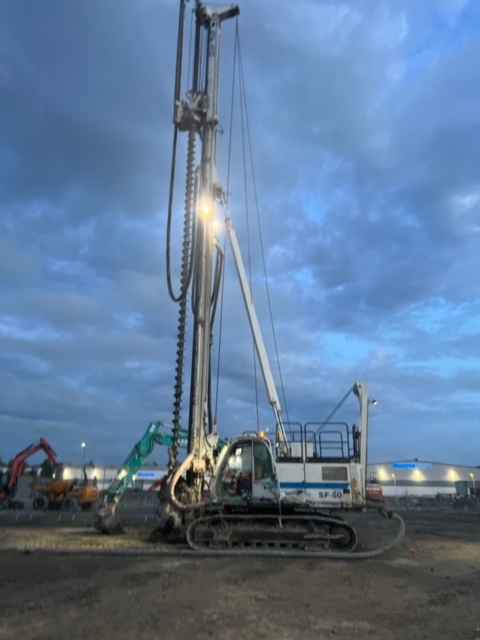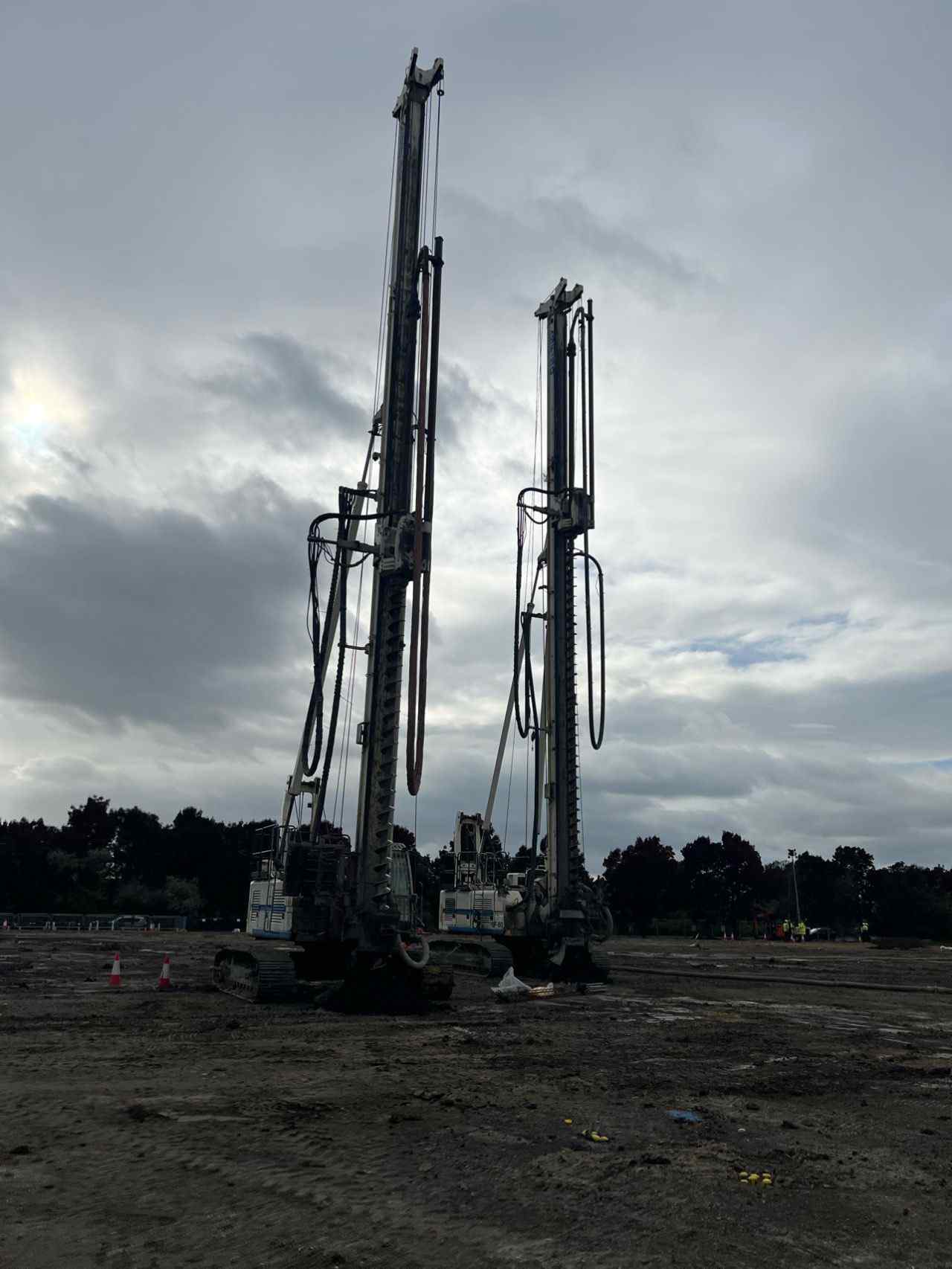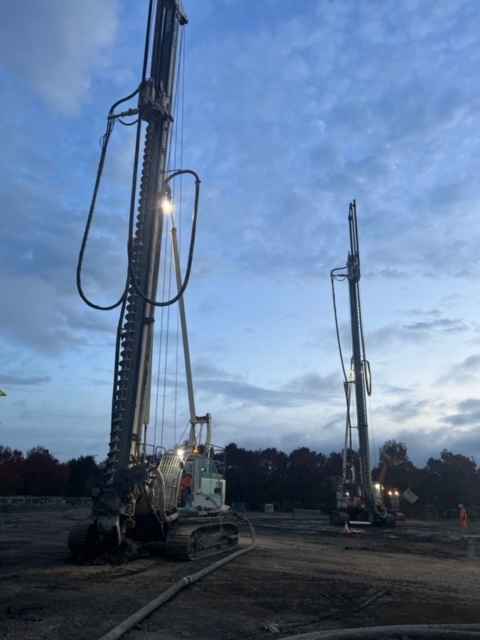A Detailed Discussion on Deep Foundations

Deep foundations play a big role in construction when we need to go deep into the ground to ensure buildings and structures stay strong and stable. Imagine a big tree, its roots go deep into the soil to keep it standing tall.
Similarly, when the depth we need for a building’s foundation is more than its width, we call it a deep foundation. If we have to go deeper than 3 meters, we use this particular kind of foundation. Deep foundations help ensure our buildings and structures have a solid base, just like a strong tree with deep roots.
This blog will teach why deep foundations are important, their types, advantages, and applications.
Why Deep Foundations are Important?
Deep foundations are like strong anchors for buildings; we use them for several important reasons. First, deep foundations come to the rescue when the ground isn’t very strong and can’t support the weight of a building well.
Also, deep foundations help it stay steady and safe if a building is heavy or tall, like a skyscraper. They’re like the strong legs that hold up the building. Another cool thing about deep foundations is that they’re perfect for places where the ground is loose and not tightly packed.
So, we use deep foundations to ensure our buildings stand tall and strong, even when the ground isn’t as solid as we’d like.
Mon–Fri: 8:00am-6:00pm
Skilled Labour
Customer Satisfaction
Advanced Machines
Types of Deep Foundations
As far as discussing the types of deep foundations is concerned, there are 5 types:
- Basements
- Buoyancy rafts
- Caissons
- Shaft foundations
- Pile foundation
Let’s discuss each of them individually:
Basement
Basements are described as hollow substructures constructed for getting useful space under the ground level that can be used e Bases are typically used for structures requiring additional space, such as homes, businesses, and parking garages.
Basements can be constructed using various methods, including poured concrete, concrete blocks, and wood framing. The load of the base will lead the engineers to select a certain type of construction.
Buoyancy Rafts
As the names indicate, buoyancy rafts are hollow box foundations that float under the ground level. These foundations are recommended when constructing a structure on weak soil.
In order to construct a buoyancy raft, you have to remove the underneath soil of an area. This creates a hollow space on which the foundation is built. The foundation is ensured to carry enough weight to balance the structure for reliable maintenance.
Caissons
Cassions are hollow substructures sunk below the ground to a specific depth once constructed on the ground level. Cassion foundations remain effective for soil having a stable layer in the bottom and covered with the upper weaker layer. Cylindrical concrete caissons are often used for structures like bridges and piers in water environments.
Drilled Shaft Foundations
Drilled shaft foundations consist of concrete pillars constructed by drilling holes into the ground, adding reinforced steel for support, and pouring concrete into the holes. This process creates a robust foundation that evenly distributes weight between the foundation and the structure.
Pile Foundations
Pile foundations involve connected hollow tubes filled with concrete. These piles are linked together through grade beams, distributing heavy loads evenly and providing structural support to the building. All the piles under a specific structure collectively collaborate to bear a load of that structure by providing a strong basis.


Pros & Cons of Deep Foundations
Pros of Deep Foundations
Installing deep foundations comes with several advantages. Prefabrication off-site leads to efficient installation, saving time and resources. The use of strong materials, such as concrete, in the piles enhances the safety and longevity of the structure. Deep foundations are particularly beneficial for larger buildings where a robust foundation is crucial for stability and durability over the years.
Cons of Deep Foundations
Deep foundations may face damage from corrosion caused by water, rocks, or natural forces, impacting the long-term integrity of the structure. A strong foundation in larger buildings requires thorough preparation, research, and planning, making these projects complex.
Construction challenges include the potential impact of vibrations from installation rigs on the new foundation and neighbouring structures and weather-related factors affecting concrete hardening and project timelines. Building a deep foundation involves intricate processes and considerations.
Applications of Deep Foundations
Deep foundations are widespread due to their rigid support, void of the condition of the soil.
Skyscrapers
Deep foundations are crucial for tall buildings like skyscrapers, where the weight and height require strong support to prevent settling or instability.
Bridges and Overpasses
Construction of bridges and overpasses often involves deep foundations to ensure stability and withstand the dynamic forces associated with vehicular loads.
Large Industrial Facilities
Industries with heavy machinery or large equipment require deep foundations to support the substantial loads and prevent ground settlement.
Historical Buildings and Monuments
Preserving historical buildings and monuments often involves using deep foundations to maintain structural integrity and prevent settling over time.
